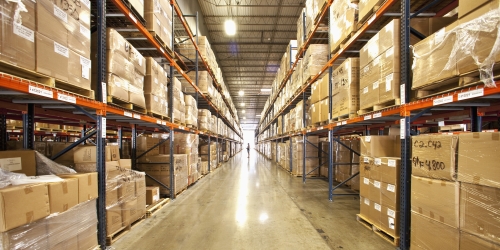Selling on Amazon lesson #1 Barcodes
- 1.The Search for Card Manufacturers
- 2.Child Safety Testing and what it means for board games.
- 3.Selling on Amazon lesson #1 Barcodes
- 4.A lesson learned hard
In order to start generating that demand, and get some sales on the board, you need to look to online sales. This can help start proving that demand and can help you with distributors. There are several ways to get into online sales. You can sell from your own website, or something like Amazon, Walmart.com, Target.com.
I’d like to share my experiences with you on how this process works and some of the Gotcha’s we’ve come across. While you’d think the first post would be about an overview of Amazon, and Fulfillment By Amazon (FBA), that would be putting the cart before the horse. Don’t worry, we’ll get there but there is something else you need to take care of first. If you are going to sell online, through any major retailer not just Amazon, you have to start planning for this way back when you are designing your boxes.

Warehousing and Logistics
One of the things that makes Amazon, and most large online retailers systems flow so well is a really tight logistics operation. That operation is largely run by automated and some manual scanners to make sure cartons and products are ending up in the right warehouse, picked and packed and inventory is tracked. It’s all dependent on bar codes. When you design your packaging you have to consider your distribution and how you are going to out barcodes on your products.
You can’t just use any barcodes. Definitely don’t just get a barcode creator or use an online one where you enter a number and it creates a .JPG or .PNG for you to stick into your artwork. I would also suggest that you do not buy a batch of barcodes from a wholesaler like buyabarcode.com or codeupc.net or anything else like that. The reason is that barcodes, like ISBNs are globally regulated. Some of these smaller wholesalers bought up barcode ranges several years ago and they sell them. But they aren’t registered and will very likely be rejected by Amazon, Walmart.com or other online, and even brick and mortar retailers. First a bit about barcodes and why this matters.
Barcodes are just machine readable, the stripes, numeric values. Barcodes are actually broken down into two sections. 612520 716073.
They look like this when printed

Kickin Your Ass Drunk Edition Bar Code
The first 6 digits are the company code. In this case 612520. The last 6 digits are the product code. If a company bought an entire range of the 612520 code he could have about 10,000 products. You don’t get the entire range from 000000-999999 due to the way checksums, and allocations work but that’s more detail than you need to know to sell online.
In any event there are two commonly used types of barcodes, EAN 13, and UPC-A. If you want to sell in Europe, you need EAN 13 codes. Otherwise you can use UPC-A (which is actually 12 digits). You can turn a UPC-A into an EAN 13 by prepending a 0 to the code. In our example 612520 716073 becomes 0612520 716073.
When it comes to buying, or in reality leasing them, you will be allocated a company code, and a batch of barcodes. You need to get these from an organization called GS1. You can find their main web site at http://gs1.org There are branch offices in just about every country that has commerce. For us we deal with GS1 Australia at https://www.gs1au.org/ .
What happens though is that you pay a membership fee to GS1 to maintain your standing and use of the barcodes that they allocate to you. This ensure that they know that the codes are being used by the right people for the right reasons. For example, Amazon will not let you sell brand name products unless you can supply the manufacturer’s barcodes on the products and you have a letter from the manufacturer saying you are a registered distributor. This GS1 process maintains the integrity of that system and tries to prevent counterfeiting.
If you let your GS1 membership lapse, the barcode allocation will be delisted and they will be put back into circulation. So if you register a product with Amazon, when they check the barcodes and find that you do not have the lease on them, they will reject your products and may even suspend your seller account.
The bottom line is, if you want to use these channels you should probably look into getting your barcodes allocated form GS1. Then you can print them directly onto your packaging and every retailer, online or otherwise, will have tracking capability for your products. But what happens if you don’t want to mess with barcodes at all? Well, there is a way to deal with that.
If you do not have any barcodes, or if you have already purchased some from a wholesaler and can’t use them, you can as Amazon to issue you their ASIN (Amazon Stock Information Number) without one. This requires you to put in an application and their team will approve you. Once you are approved you will have a limited time, usually 90 days, to list all of your products, but the mandatory field for entering your barcode will be disabled. Once you list your product, Amazon will issue their ASIN without a barcode (they always issue an ASIN but if you have registered barcodes, it’s tied to that). Here’s the gotcha though.
If you do this, every product will have to be labeled with that ASIN barcode. You can label your products yourself before you send them to Amazon. They have a really nice interface that lets you create a PDF that you can print directly onto Avery labels which you stick to your products. Alternatively, Amazon will do this for you. No, it’s not free, it is at the time I wrote this, $0.20 USD per item. For them to do 100 card games is $20.00. For them to do a thousand card games is $200 etc. So it’s up to you. You are essentially spending away the hassle of doing it yourself. But let’s face it, we’re in the board game industry, we don’t have lots of spare cash. 😉
I got caught out. I bought 10 barcodes form a wholesaler, and they are useless now. I got the ‘no barcode’ exemption from Amazon to get them to issue the ASINs and I’m having our logistics partner label them for me as they send cartons of games to Amazon. In our case this is Send From China. (http://sendfromchina.com) They will put the Amazon ASIN barcode on each game for us for about. $0.02 per label, or 1/10th of what Amazon labeling service charges.
To sum up, figure out how you are going to deal with Barcodes when you are putting together your box art. If you are going to have your own barcodes, register with GS1, get your codes allocated to you properly and have them printed onto your boxes. If not, just make sure you go through the Amazon labeling service and be ready to label your products before you send them to Amazon. I hope this helps you. Best of luck. This is a great example of where an ounce of planning is worth a pound of cure.[/vc_column_text][/vc_column][/vc_row]




